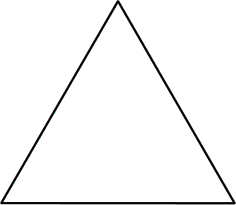24 JAN 2014 by ideonexus
 Stones are Chaos
Stones are Chaos
The difference between a piece of stone and an atom is that an atom is highly organised, whereas the stone is not. The atom is a pattern, and the molecule is a pattern, and the crystal is a pattem; but the stone, although it is made up of these pattems, is just a mere confusion. It's only when life appears that you begin to get organisation on a larger scale. Life takes the atoms and molecules and crystals; but, instead of making a mess of them like the stone, it combines them into new and mo...Despite being made up of atoms, molecules, and crystals, which are organization.
23 OCT 2013 by ideonexus
 Proof that Objects Fall at the Same Rate
Proof that Objects Fall at the Same Rate
Salv.
But, even without further experiment, it is possible to prove clearly, by means of a short and conclusive argument, that a heavier body does not move more rapidly than a lighter one provided both bodies are of the same material and in short such as those mentioned by Aristotle. But tell me, Simplicio, whether you admit that each falling body acquires a definite speed fixed by nature, a velocity which cannot be increased or diminished except by the use of force [violenza] or resistance....Galileo's proof is based completely on a thought-experiment, no observation necessary.
18 JUN 2012 by ideonexus
 A Watch Implies a Watchmaker Argument
A Watch Implies a Watchmaker Argument
In crossing a heath, suppose I pitched my foot against a stone, and were asked how the stone came to be there, I might possibly answer, that, for any thing I knew to the contrary, it had lain there for ever: nor would it perhaps be very easy to shew the absurdity of this answer. But suppose I had found a watch upon the ground, and it should be enquired how the watch happened to be in that place, I should hardly think of the answer which I had before given, that, for any thing I knew, the watc...Folksonomies: creationism
Folksonomies: creationism
Early example of it from 1802.
01 JUN 2012 by ideonexus
 Parable of Many People Working on a Large Project
Parable of Many People Working on a Large Project
A parable: A man was examining the construction of a cathedral. He asked a stone mason what he was doing chipping the stones, and the mason replied, “I am making stones.” He asked a stone carver what he was doing. “I am carving a gargoyle.&rdquo. And so it went, each person said in detail what they were doing. Finally he came to an old woman who was sweeping the ground. She said. “I am helping build a cathedral.”
...Most of the time each person is immersed in the details of one...Often we are so immersed in the details of our work that we fail to see the big picture of what we are contributing to. I could see this parable apply to anyone in our society, where we all are building civilization.
28 JAN 2012 by ideonexus
 Thoughts on a Collapsing Wall
Thoughts on a Collapsing Wall
One summer day, while I was walking along the country road on the farm where I was born, a section of the stone wall opposite me, and not more than three or four yards distant, suddenly fell down. Amid the general stillness and immobility about me the effect was quite startling. ... It was the sudden summing up of half a century or more of atomic changes in the material of the wall. A grain or two of sand yielded to the pressure of long years, and gravity did the rest. Folksonomies: geology
Folksonomies: geology
A stone wall collapses, and the author imagines the half-century of atomic changes that brought about the mini avalanche.
13 APR 2011 by ideonexus
 A World made by Atomes.
A World made by Atomes.
SMall Atomes of themselves a World may make,As being subtle, and of every shape:And as they dance about, fit places finde,Such Formes as best agree, make every kinde.For when we build a house of Bricke, and Stone, [5]We lay them even, every one by one:And when we finde a gap that's big, or small,We seeke out Stones, to fit that place withall.For when not fit, too big, or little be,They fall away, and cannot stay we see. [10]So Atomes, as they dance, finde places fit,They there remaine,...Margaret Cavendish's 1653 poem on the nature of atoms,




